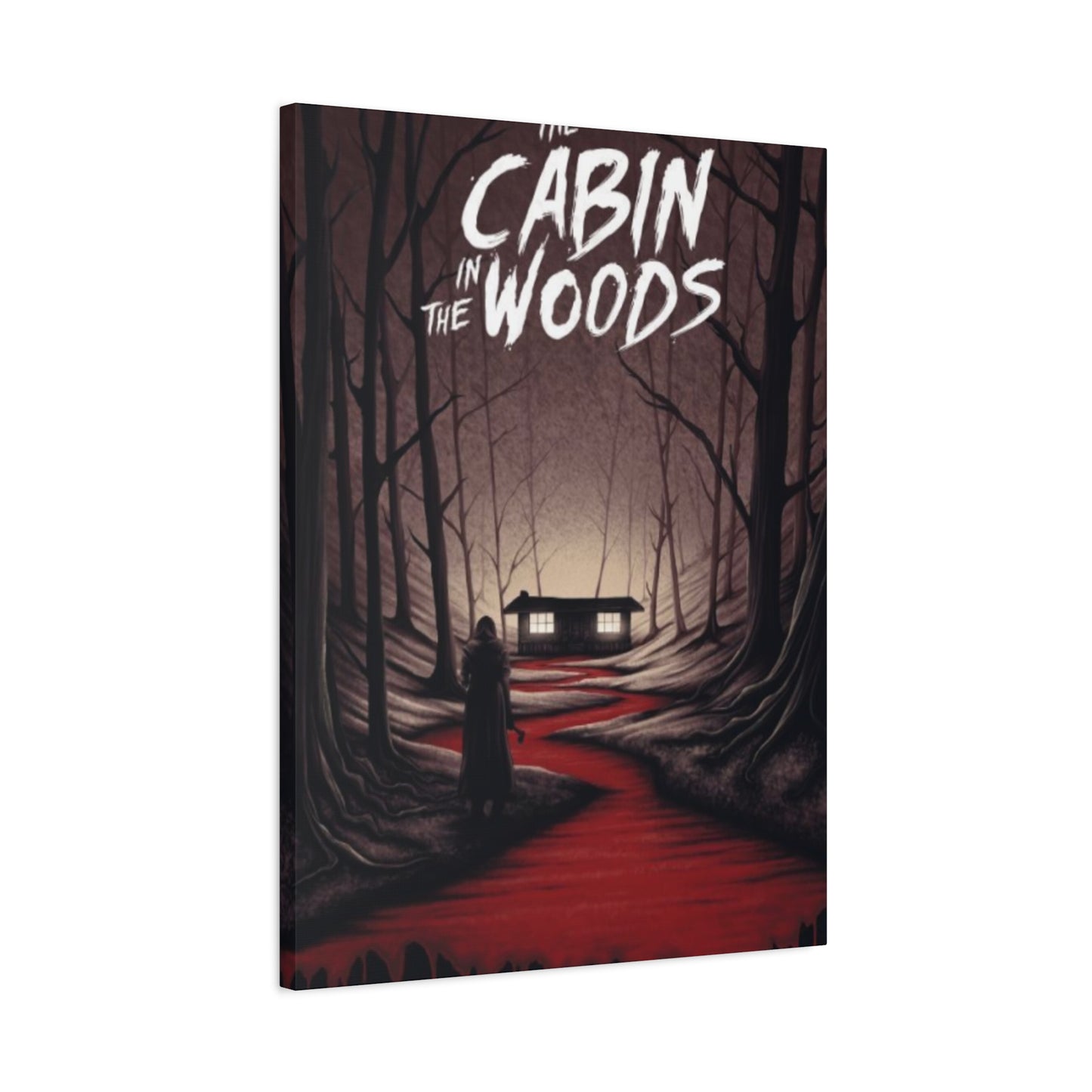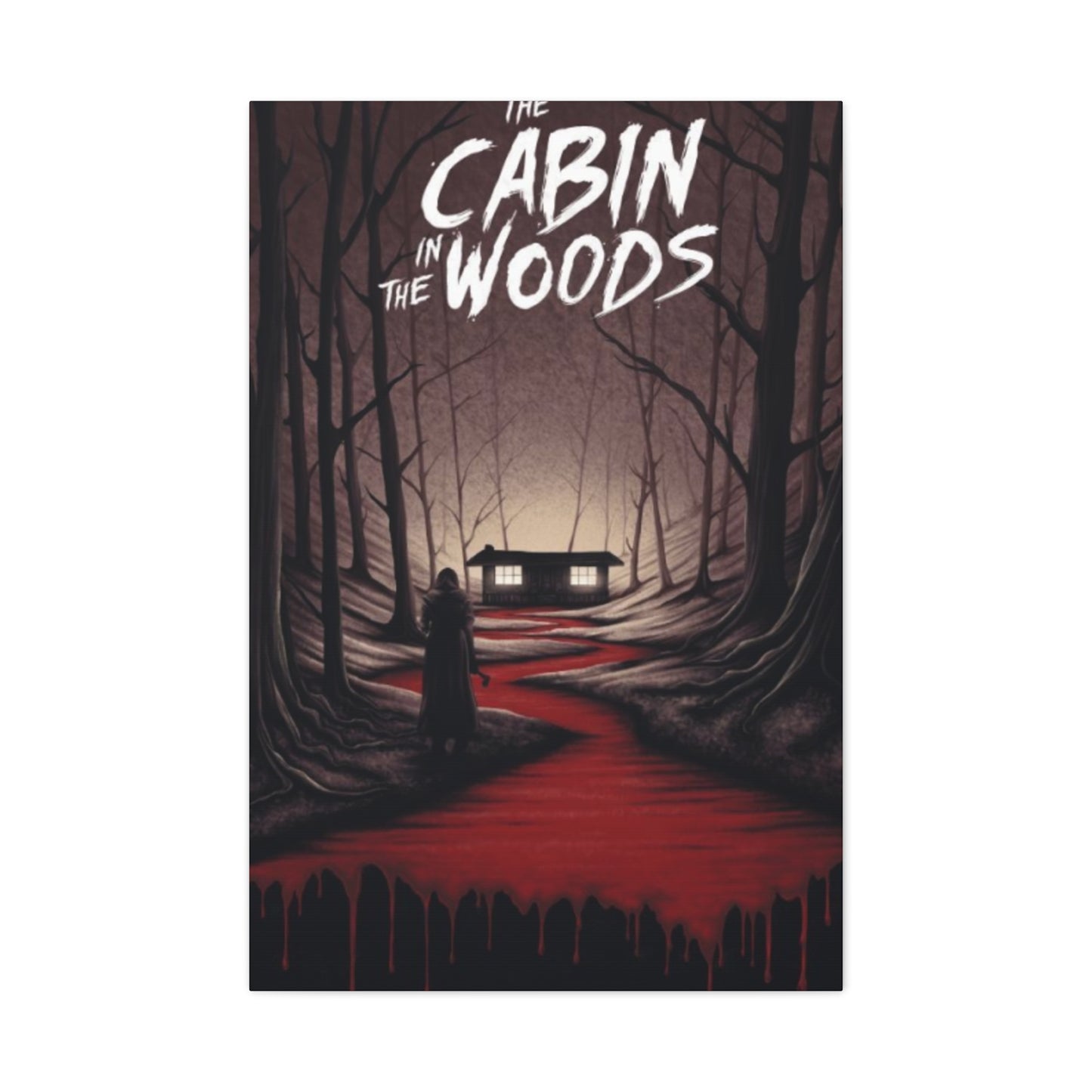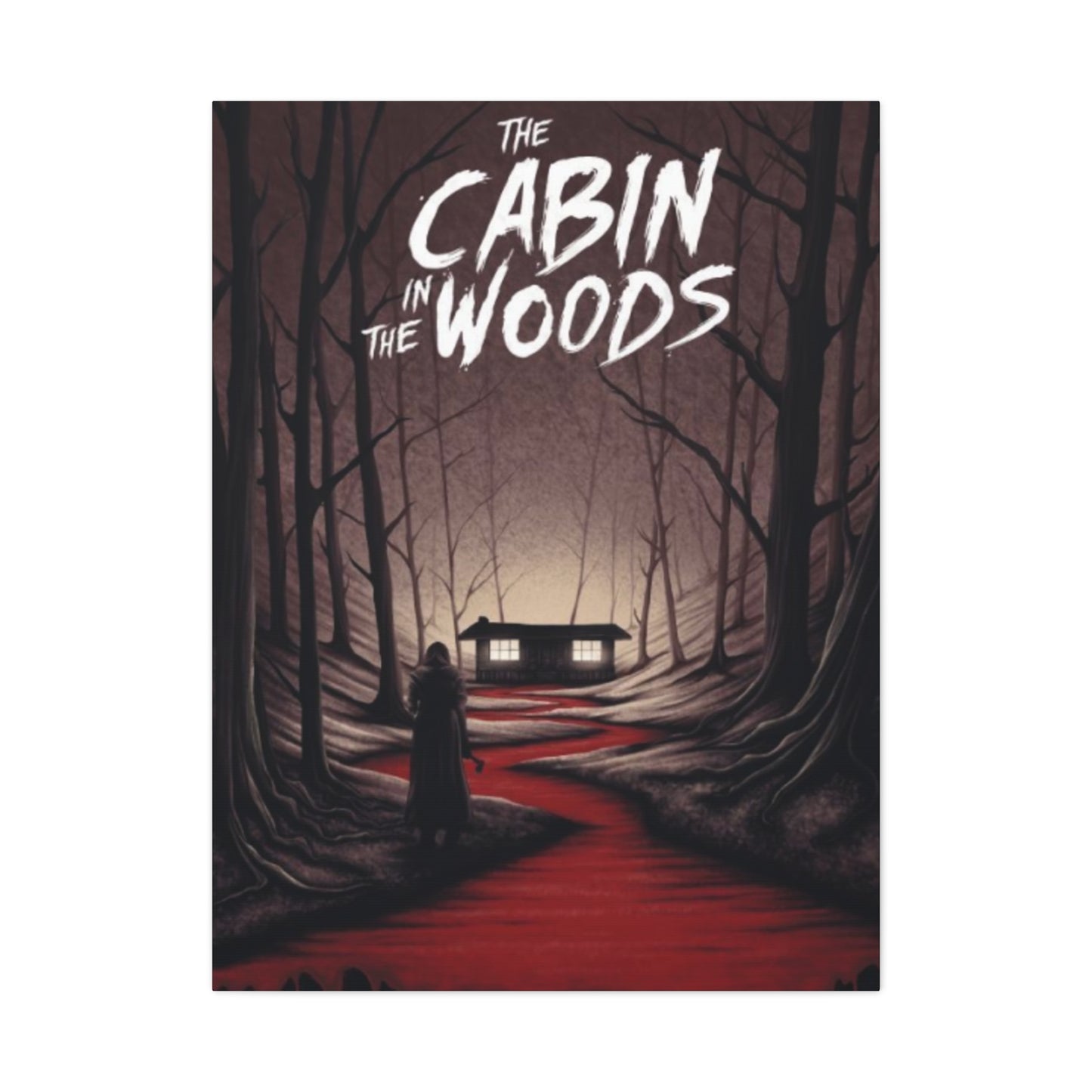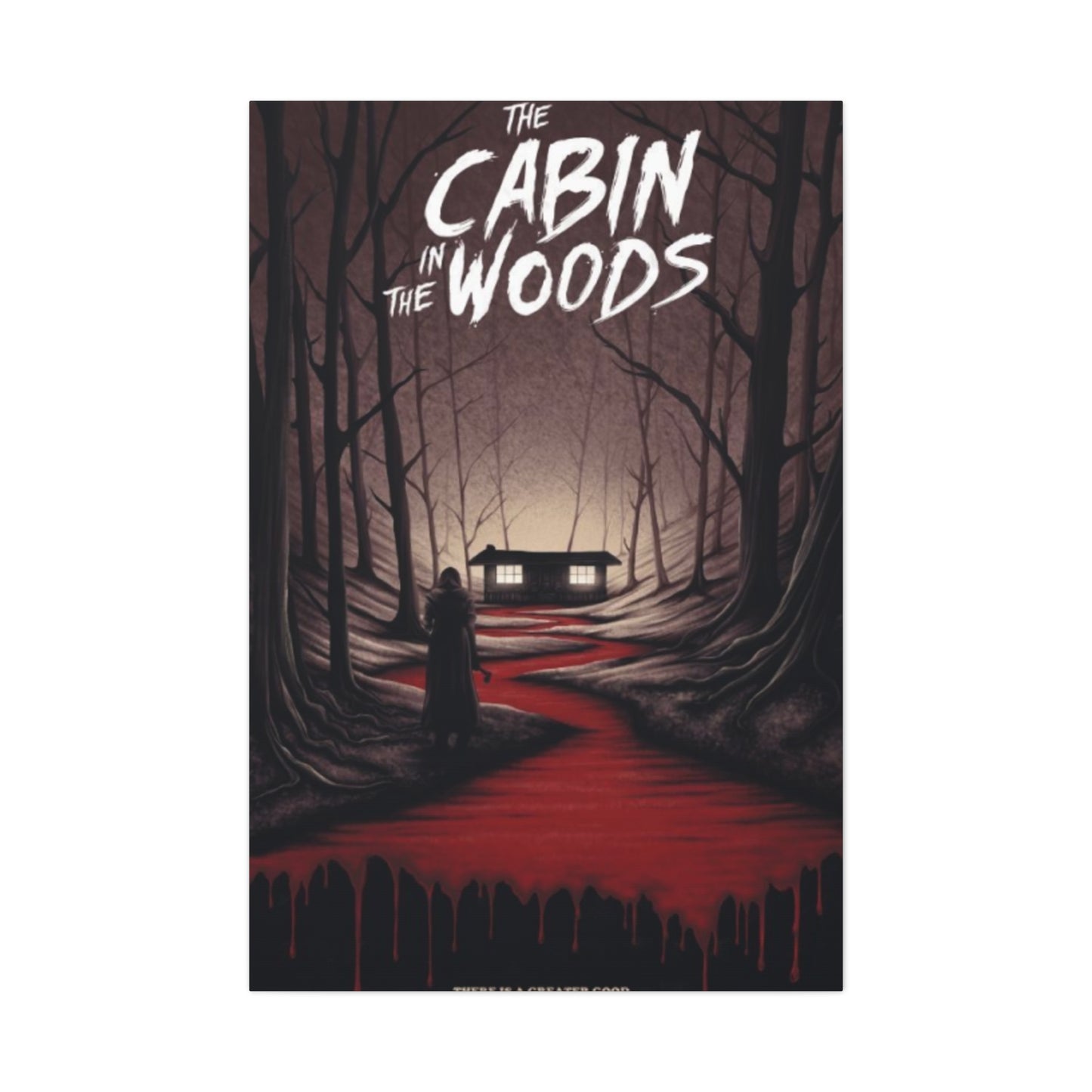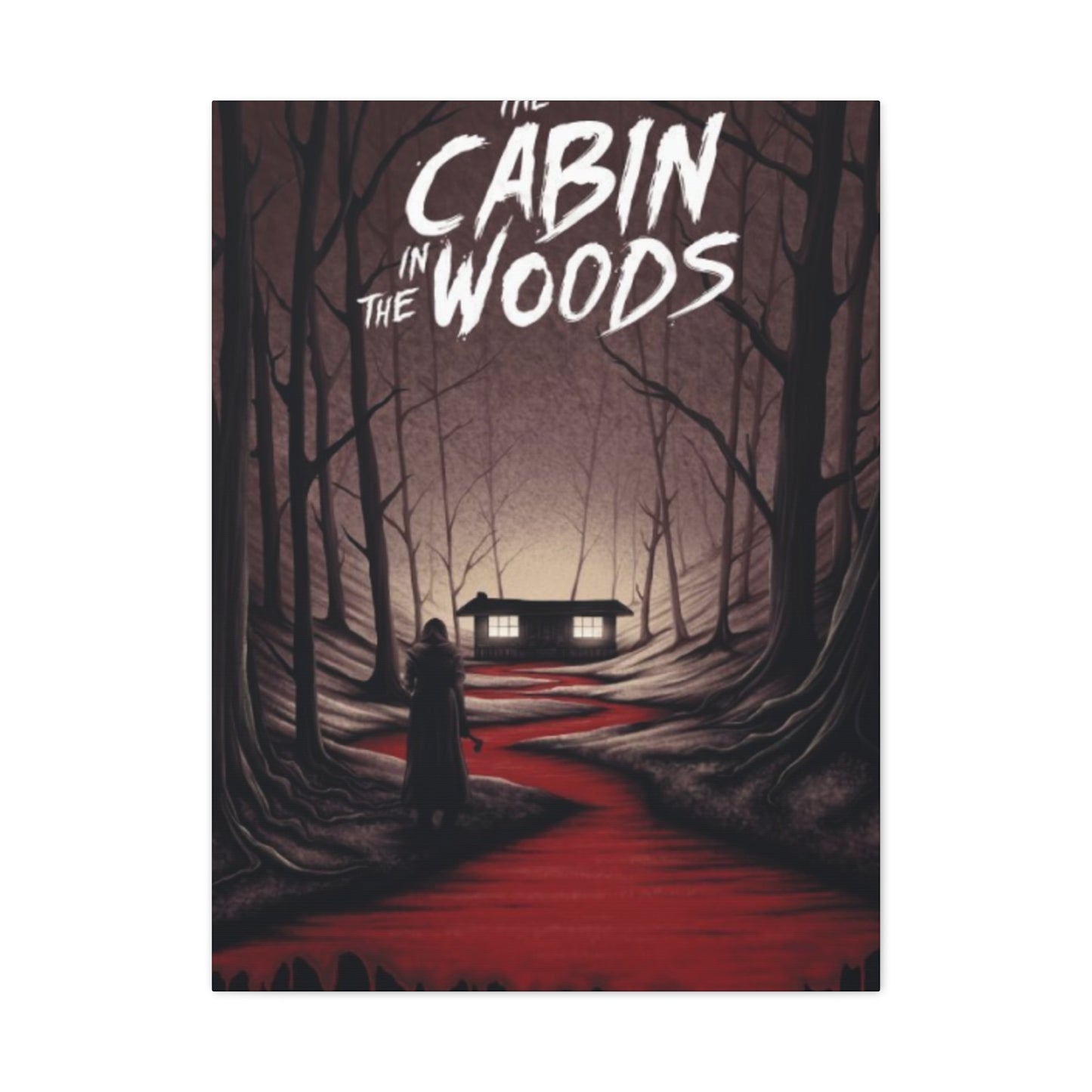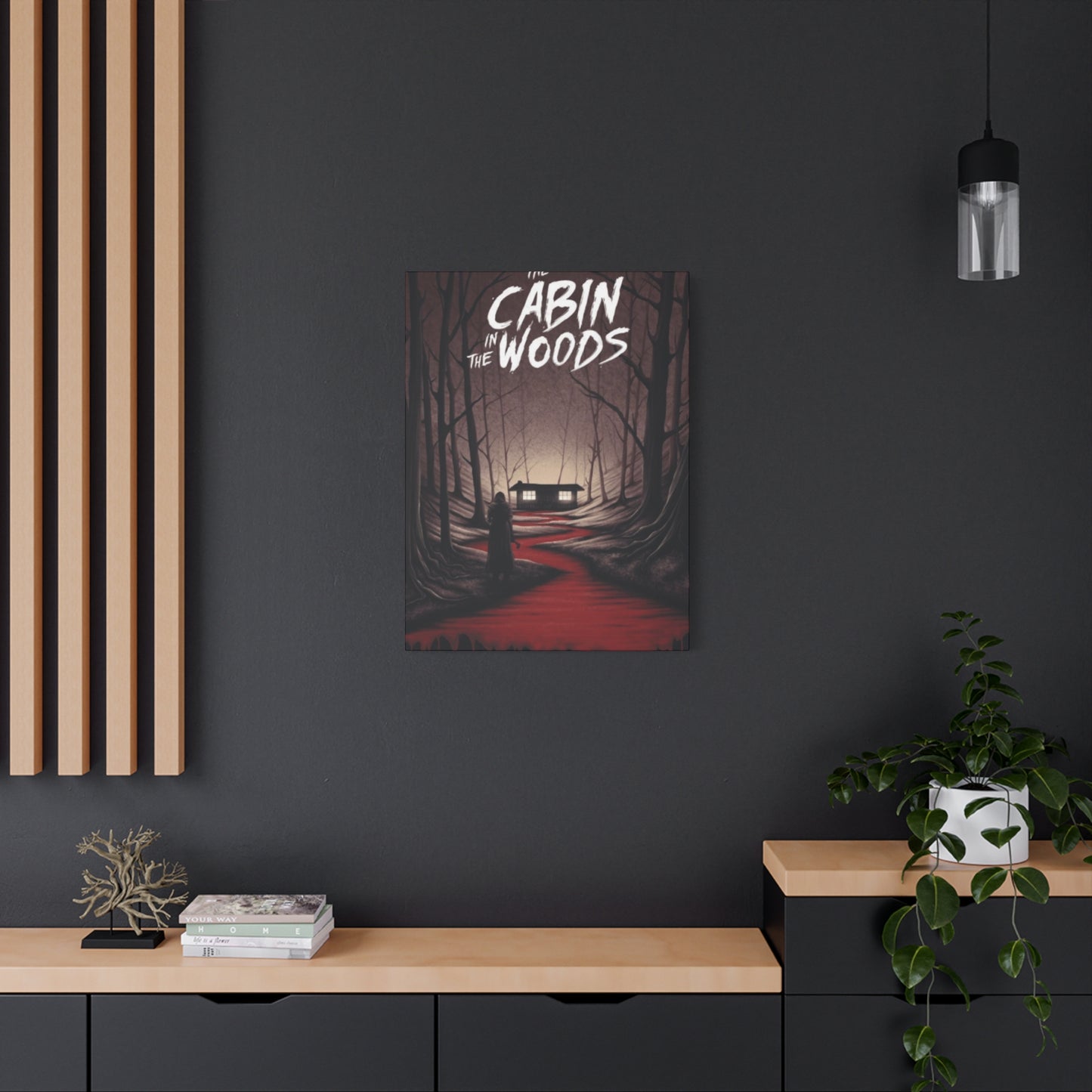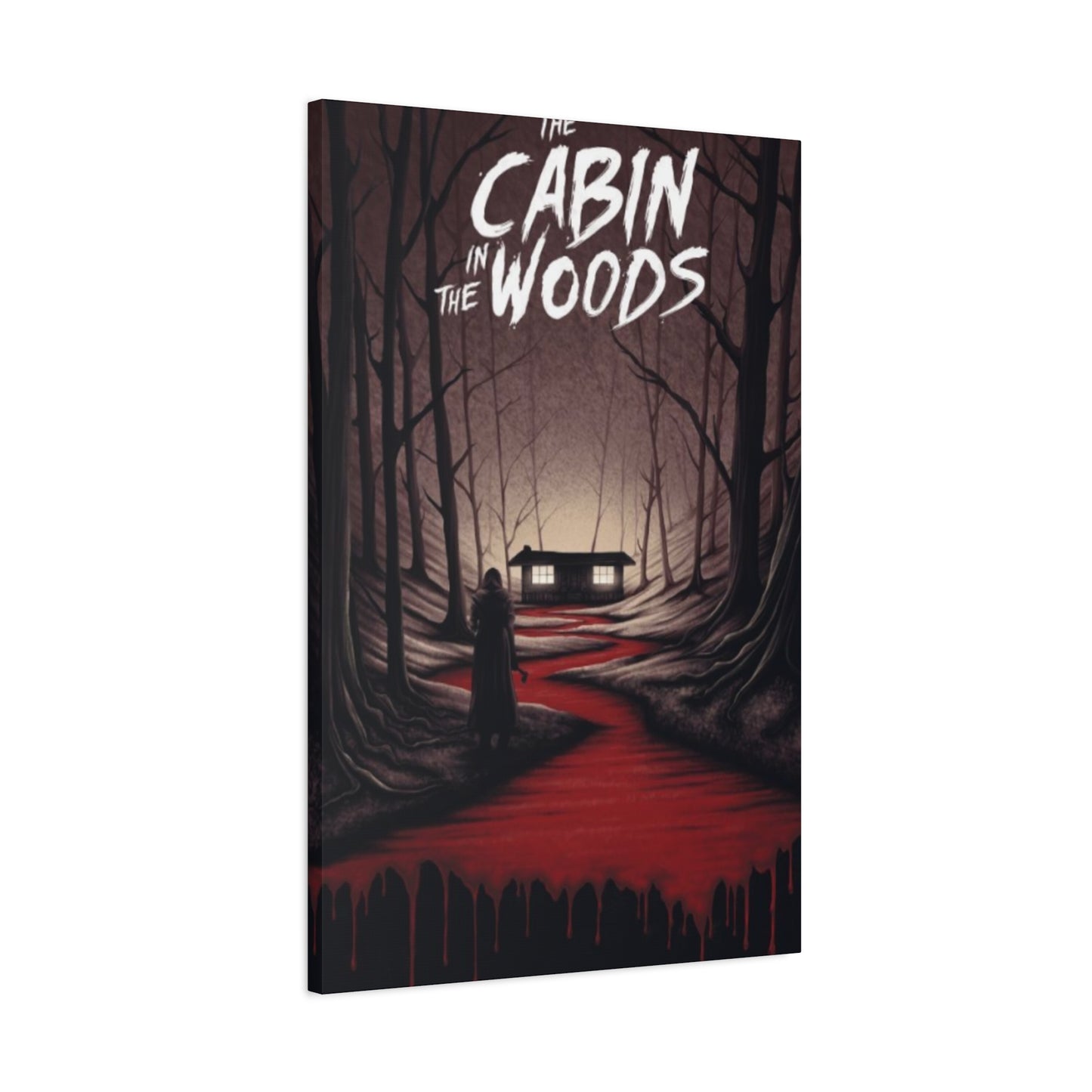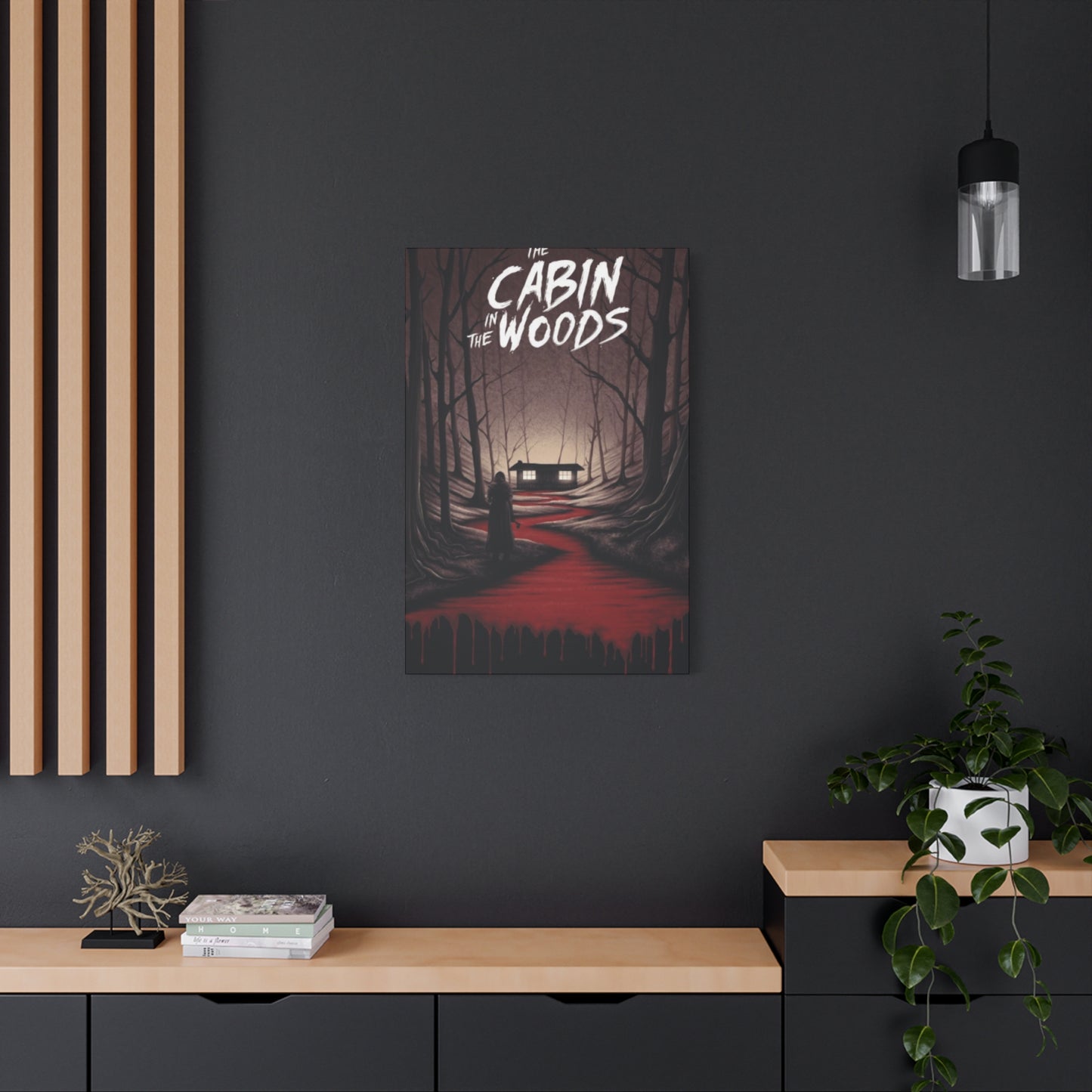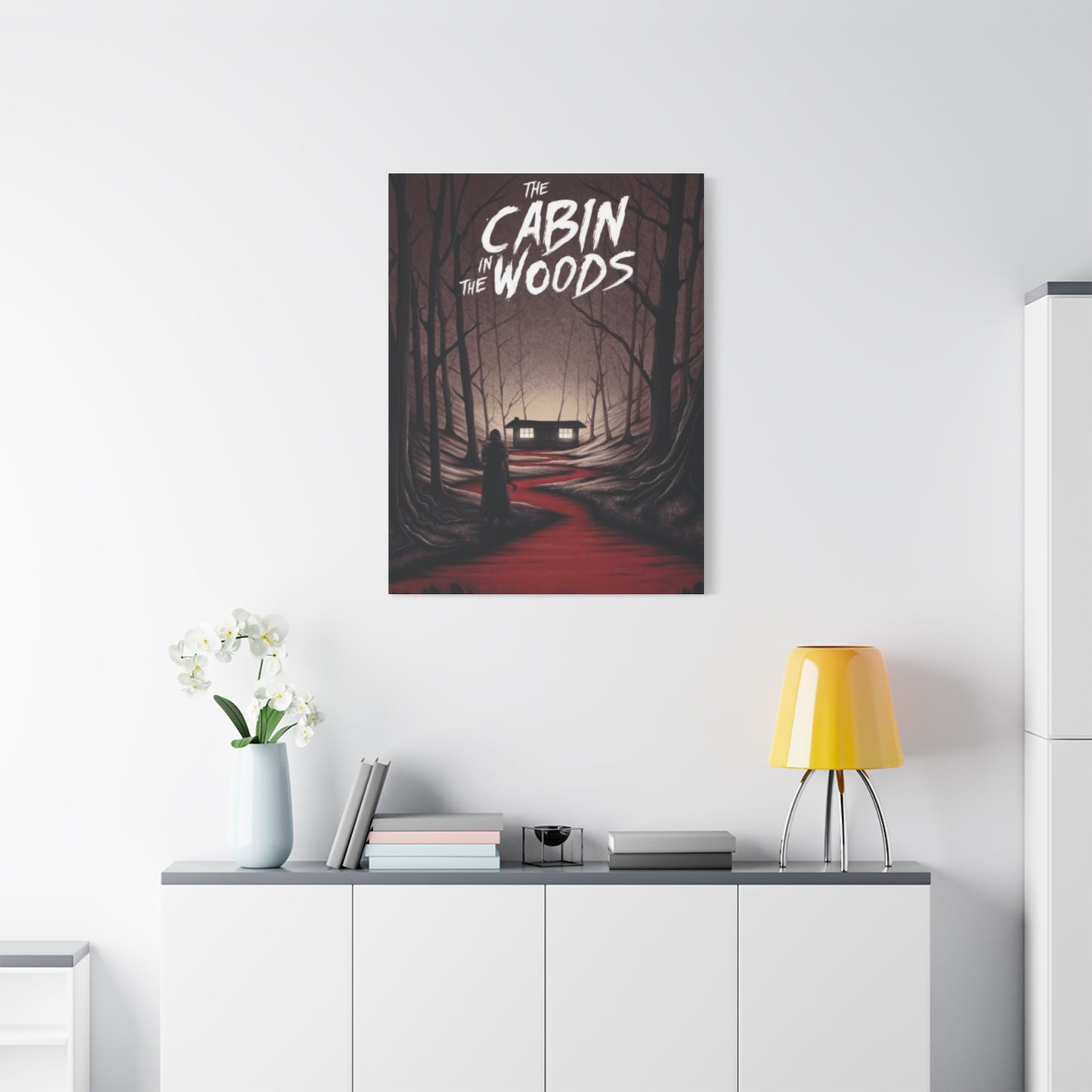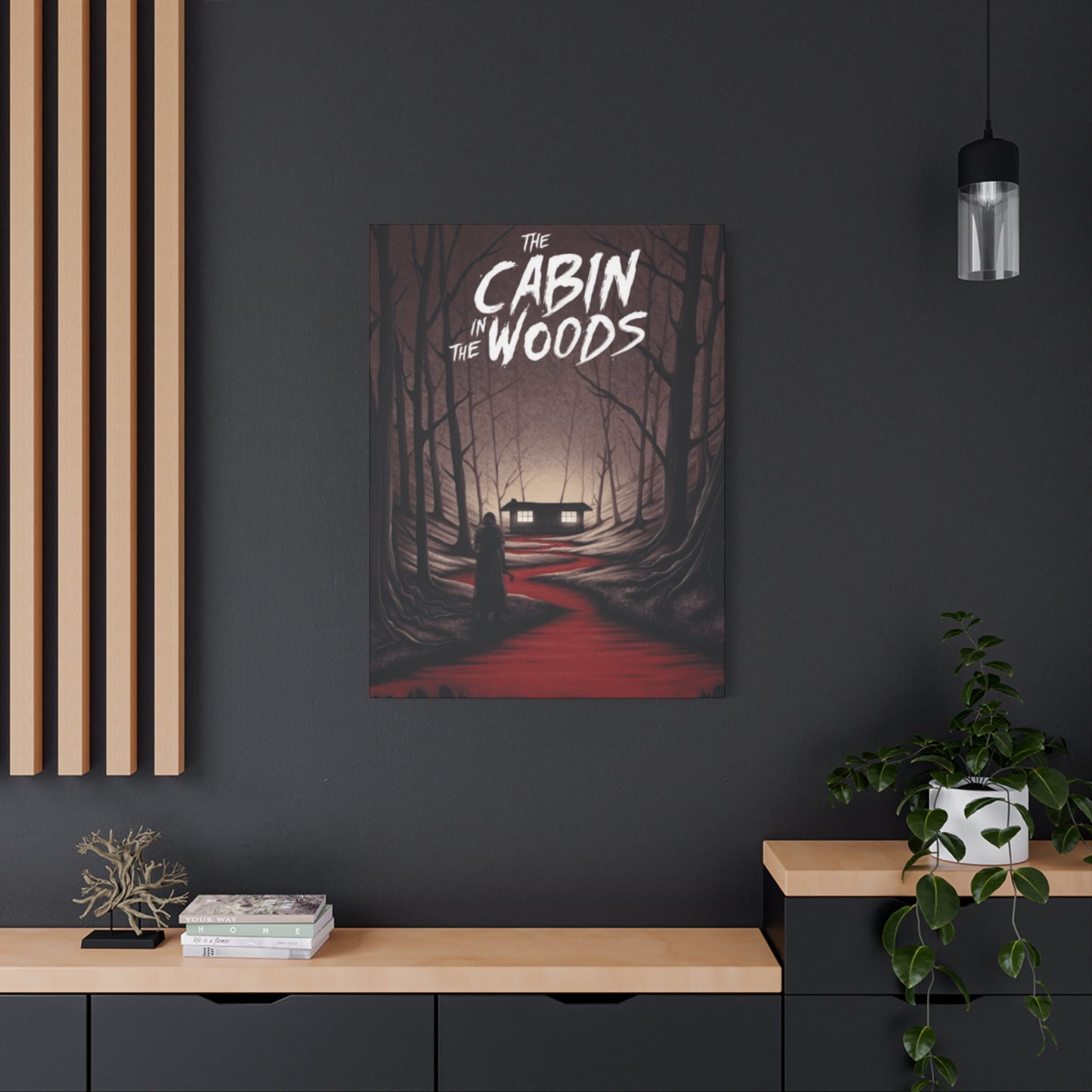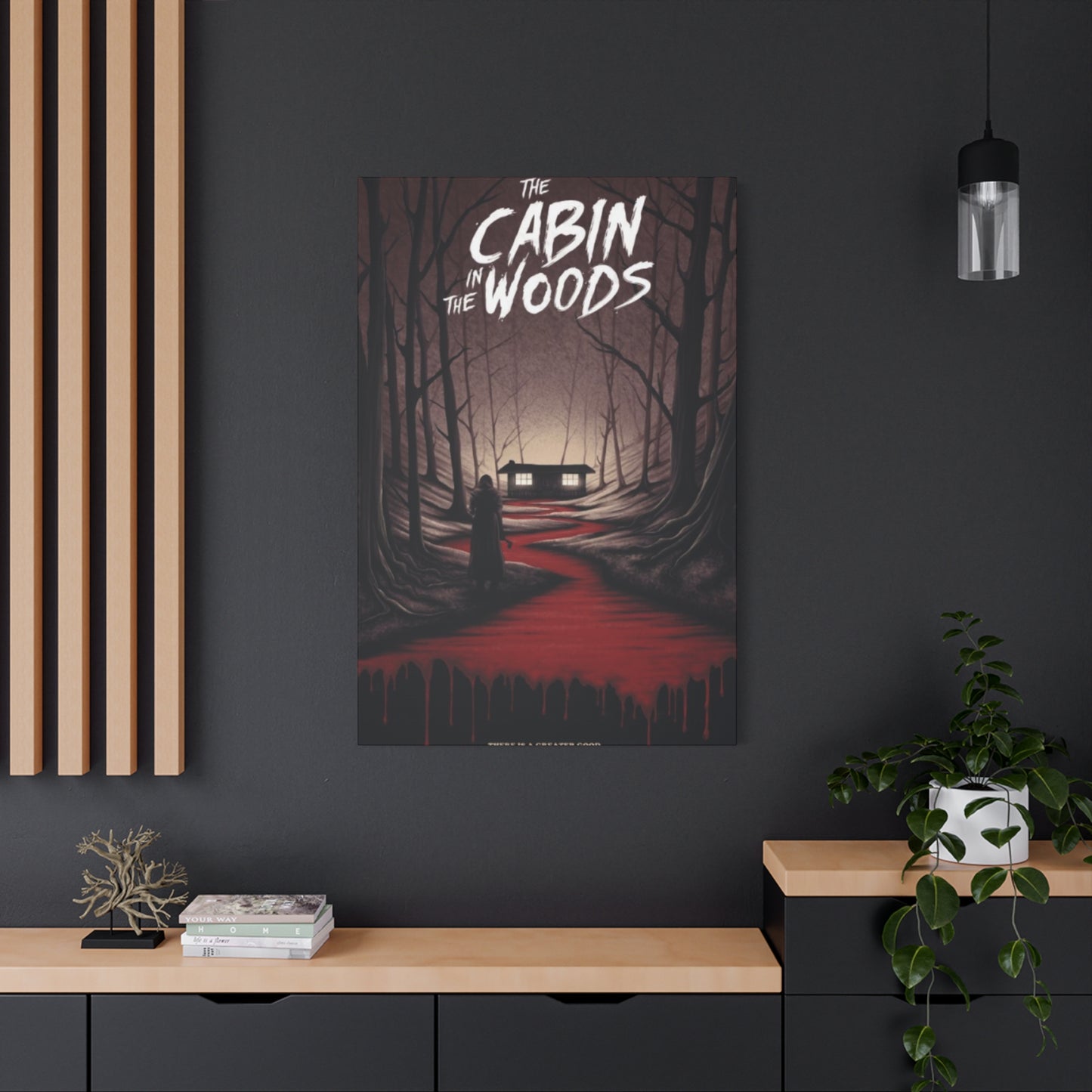The Cabin in the Woods Horror Movie Poster Wall art: Artistic Excellence for Your Home Décor Collection
Horror cinema has always captivated audiences with its ability to evoke visceral reactions and unforgettable imagery. Among the most iconic representations of this genre stands a particular film that revolutionized horror storytelling through meta-narrative brilliance and stunning visual composition. The poster artwork from this celebrated production has transcended its promotional origins to become a coveted piece of wall decoration that resonates with enthusiasts of frightening narratives and sophisticated artistic expression. This comprehensive exploration delves into every facet of these canvas prints, examining their cultural significance, aesthetic value, practical considerations, and why they have become essential acquisitions for those seeking to elevate their living spaces with captivating imagery.
The convergence of cinematic artistry and home decoration represents a fascinating development in contemporary interior design philosophy. When we discuss poster reproductions on canvas material, we address not merely decorative accessories but cultural artifacts that communicate personal taste, intellectual engagement, and aesthetic sophistication. These wall hangings serve multiple purposes simultaneously: they commemorate beloved entertainment experiences, spark conversations among visitors, and contribute meaningful visual interest to otherwise mundane wall surfaces. The specific imagery associated with this wilderness-themed frightening narrative offers particularly compelling opportunities for creative display arrangements.
Revolutionary Storytelling Reflected in Visual Design
The motion picture that inspired these decorative pieces fundamentally challenged conventional expectations within its genre. Rather than following predictable patterns established by decades of similar productions, the filmmakers crafted a narrative that simultaneously honored and deconstructed familiar tropes. This self-aware approach manifested not only in the screenplay and directorial choices but also in the marketing materials created to promote the theatrical release. The poster designs emerged as visual statements that hinted at the film's layered complexity without revealing its numerous surprises.
Understanding the promotional artwork requires appreciating the delicate balance the marketing team needed to strike. They faced the challenge of attracting audiences who enjoyed traditional frightening narratives while simultaneously appealing to viewers who might appreciate more intellectually ambitious storytelling. The resulting designs incorporated recognizable iconography from the genre while introducing subtle elements that suggested something unconventional awaited those who purchased tickets. This dual-purpose approach explains why the imagery remains compelling years after the film's initial theatrical run.
The visual composition typically features the titular structure set against ominous natural surroundings, with careful attention to lighting that creates atmospheric tension. The color palette often emphasizes deep shadows punctuated by strategic highlights that draw the eye toward specific compositional elements. Typography choices reinforce the unsettling mood while maintaining readability across various sizes and viewing distances. Every design decision reflects careful consideration of how audiences process visual information and form emotional responses to imagery.
Canvas Material Advantages for Poster Reproduction
When collectors and decorators consider acquiring reproductions of beloved promotional artwork, the substrate material significantly impacts the final presentation quality and longevity. Canvas prints offer numerous advantages compared to traditional paper posters or other reproduction methods. The textured surface of canvas material adds tactile dimension that enhances visual depth, creating a more substantial and prestigious appearance. This three-dimensional quality makes imagery appear more dynamic and engaging, particularly when viewed from various angles under different lighting conditions.
The durability of canvas construction far exceeds that of paper alternatives. While paper posters deteriorate relatively quickly when exposed to environmental factors like humidity fluctuations, temperature variations, and ultraviolet radiation, properly prepared canvas withstands these challenges much more effectively. The fabric structure resists tearing and puncturing, making it suitable for households with children or pets where accidental damage might occur. This resilience translates to superior long-term value, as the investment maintains its appearance and condition across years or even decades of display.
Canvas prints also eliminate the need for glass covering, which presents several practical benefits. Without reflective glass surfaces, viewers can appreciate the artwork from any angle without glare interference. This characteristic proves especially valuable in rooms with multiple windows or various light sources that would create reflection problems with framed glass-covered prints. Additionally, the absence of glass reduces overall weight, simplifying installation and reducing stress on wall-mounting hardware. The elimination of breakable components also enhances safety in homes with active children or in earthquake-prone regions.
The professional appearance of gallery-wrapped canvas construction contributes to the premium aesthetic these reproductions provide. When the printed image extends around the edges of the stretcher frame, the artwork gains a finished, complete appearance that commands attention. This wraparound technique eliminates visible borders and creates a floating effect that modern interior design schemes frequently emphasize. The three-dimensional profile adds sculptural qualities that flat paper posters simply cannot achieve, transforming wall art from mere decoration into architectural elements that shape spatial perception.
Horror Imagery in Living Spaces
The decision to display frightening narrative artwork in residential or professional environments reflects fascinating psychological dynamics worth examining. Conventional wisdom might suggest that disturbing or unsettling imagery would create uncomfortable atmospheres, yet many individuals specifically seek such pieces for their personal spaces. This apparent contradiction reveals important truths about human psychology and our complex relationship with fear-inducing stimuli in controlled contexts.
Research into aesthetic preferences demonstrates that exposure to mildly threatening imagery in safe environments can produce pleasurable arousal. This phenomenon explains the enduring popularity of the horror genre across various media formats. When we experience simulated danger through entertainment, our bodies generate physiological responses similar to genuine threat encounters, including elevated heart rates and heightened alertness. However, because our conscious minds recognize the fictional nature of the stimulus, we can enjoy these sensations without experiencing actual distress. Displaying artwork associated with frightening narratives allows individuals to access this pleasurable arousal through visual engagement rather than narrative immersion.
The presence of horror-themed decoration also serves important social signaling functions. Personality research indicates that appreciation for dark or macabre aesthetics correlates with certain character traits including openness to experience, intellectual curiosity, and nonconformist attitudes. By selecting unconventional decorative elements, individuals communicate their rejection of bland mainstream tastes in favor of more distinctive personal expression. This communication occurs largely unconsciously, as visitors to decorated spaces form impressions based on environmental cues without explicit discussion of decorative choices.
Furthermore, horror imagery in home environments can function as conversation catalysts that facilitate social bonding. When guests notice unusual or striking artwork, they typically comment on these pieces, creating natural opportunities for hosts to share stories about their acquisations, discuss their appreciation for particular films or artistic styles, and discover common interests with visitors. These conversations build connections more effectively than generic decorative selections that elicit little comment or engagement. The specific movie referenced by these canvas prints enjoys particularly strong cultural recognition, making it an especially effective conversation generator.
Strategic Placement Considerations for Maximum Visual Impact
The effectiveness of any decorative element depends substantially on thoughtful placement decisions. Even the most visually striking artwork fails to achieve its potential when positioned inappropriately within a space. Canvas prints featuring horror movie imagery require particularly careful consideration regarding location, surrounding elements, and viewing contexts to maximize their aesthetic contribution while maintaining comfortable, functional environments.
Living rooms represent the most common location for displaying conversation-starting artwork. These spaces typically serve as primary gathering areas where family members and guests spend significant time, ensuring regular engagement with displayed pieces. When incorporating horror-themed canvas prints in living rooms, consider positioning them as focal points on prominent walls where they naturally draw attention without overwhelming the space. Placement above seating areas works particularly well, as viewers can comfortably contemplate the artwork while engaged in relaxed activities.
Entertainment rooms and home theaters provide especially appropriate settings for cinema-related decoration. These spaces explicitly celebrate media consumption, making film poster reproductions thematically consistent with room functions. In dedicated viewing environments, you can embrace more dramatic or intensive horror imagery without concern about creating uncomfortable atmospheres, as visitors enter these spaces with expectations of engaging with entertainment content. Consider arranging multiple related pieces to create gallery walls that celebrate horror cinema more broadly while featuring this particular title as a centerpiece.
Personal spaces like bedrooms or home offices offer opportunities for more intimate engagement with selected artwork. In these private environments, decorative choices reflect individual preferences without needing to accommodate diverse visitor reactions. Horror enthusiasts who find the imagery personally meaningful might display it in spaces where they spend considerable solitary time, allowing frequent contemplation and enjoyment. The bedroom wall opposite the bed provides excellent visibility during both waking and bedtime routines, while office positioning behind desk areas creates impressive backgrounds for video conference calls.
Hallways and staircases present unique opportunities for creating dramatic visual experiences through strategic artwork placement. These transitional spaces naturally guide movement and attention, making them ideal for sequential displays that tell visual stories. Consider arranging multiple related prints along corridor walls or ascending stairwell walls to create curated exhibitions that reward careful observation. The limited time viewers typically spend in these spaces makes them suitable for more intense or challenging imagery that might prove overwhelming during extended exposure.
Color Coordination and Interior Design Integration
Successfully incorporating horror movie canvas prints into existing decorative schemes requires careful attention to color relationships and stylistic coherence. While dramatic artwork naturally commands attention, it should enhance rather than clash with surrounding design elements. Thoughtful consideration of color palettes, material textures, and aesthetic movements ensures that new additions feel intentionally integrated rather than arbitrarily imposed.
The typical color palette of horror promotional artwork emphasizes dark values with strategic accent colors that create visual tension. Deep blacks, shadowy grays, and rich earth tones frequently dominate these compositions, punctuated by startling reds, sickly greens, or cold blues that heighten emotional impact. When selecting complementary furniture, textiles, and accessories, consider how these colors interact with existing room schemes. Spaces decorated primarily in neutral tones provide flexible backdrops that allow dramatic artwork to shine without color conflicts, while rooms featuring bolder color choices require more careful coordination.
Monochromatic or near-monochromatic decorating approaches offer particularly effective frameworks for displaying horror artwork. When room schemes emphasize variations of single color families, the introduction of visually complex canvas prints adds necessary variety without creating chaotic visual fields. Gray-scale interior palettes provide especially sophisticated contexts for horror imagery, as the absence of competing colors allows viewers to focus on compositional and atmospheric qualities. This approach works beautifully in modern or minimalist spaces where restraint and intentionality define the aesthetic philosophy.
Contrasting approaches can prove equally successful when executed with confidence and clear vision. Deliberately pairing dark horror imagery with unexpected bright or pastel surroundings creates jarring juxtapositions that amplify the unsettling qualities of both elements. This high-contrast strategy demands careful calibration to avoid descent into kitsch or confusion, but when successful, it generates memorable spaces that challenge expectations and demonstrate sophisticated aesthetic sensibilities. Consider consulting color theory principles to identify complementary relationships that create dynamic tension while maintaining visual harmony.
Material textures throughout decorated spaces should complement the canvas substrate of displayed artwork. Natural materials like wood, leather, and stone share organic qualities with canvas fabric that create cohesive sensory experiences. Smooth, reflective surfaces like glass or polished metal provide effective contrasts that highlight the matte texture of canvas while adding visual variety. Avoid overwhelming spaces with excessive texture variations that compete for attention, instead selecting a limited palette of complementary materials that work together to build unified environments.
Sizing Options and Spatial Relationships
Canvas prints featuring horror movie imagery are available in diverse dimensions suitable for various spatial contexts and decorative intentions. Selecting appropriate sizes requires evaluating both practical constraints and aesthetic objectives to ensure final installations achieve desired visual impacts without overwhelming or underwhelming their settings.
Compact prints measuring approximately twelve by eighteen inches or sixteen by twenty inches serve well in smaller rooms, tight wall spaces, or as components in larger gallery arrangements. These modest dimensions work beautifully in powder rooms, small offices, or alongside doorways where limited wall space precludes larger installations. Despite their reduced scale, quality reproduction techniques ensure that imagery remains clear and impactful, with carefully preserved details that reward close examination. Multiple smaller prints can be arranged in geometric patterns or asymmetric clusters to create dynamic visual compositions that feel more substantial than individual pieces.
Medium-sized options spanning roughly twenty-four by thirty-six inches or thirty by forty inches represent versatile choices suitable for most residential applications. These dimensions provide sufficient visual presence to function as focal points on standard residential walls without dominating entire rooms. Medium canvas prints work particularly well above furniture pieces like sofas, beds, or console tables, where their proportions create balanced relationships with underlying elements. The manageable weight and dimensions of medium prints simplify installation processes while still delivering impressive visual impact.
Large-format reproductions measuring four feet or more in either dimension make dramatic statements appropriate for spacious rooms with generous wall expanses. These substantial pieces function as architectural elements that fundamentally shape spatial character rather than merely decorating existing environments. Great rooms, loft apartments, or commercial spaces benefit particularly from oversized artwork that fills vertical and horizontal space with confidence. When selecting large canvas prints, carefully measure available wall areas and consider viewing distances to ensure that imagery remains visually coherent from typical observation positions.
The relationship between artwork size and wall dimensions follows general proportional guidelines that help ensure harmonious integration. As a broad principle, canvas prints should occupy approximately two-thirds to three-quarters of the width of furniture pieces they hang above, creating balanced visual relationships. For standalone wall installations without underlying furniture, artwork should neither float uncomfortably small within vast empty space nor crowd oppressively close to architectural features like doors, windows, or adjacent walls. Maintaining appropriate borders of empty wall space around displayed pieces allows imagery to breathe and prevents cluttered appearances.
Production Quality Indicators and Selection Criteria
The market offers canvas print reproductions at dramatically varying quality levels and price points. Understanding key quality indicators empowers consumers to make informed purchasing decisions that balance budget constraints against desired aesthetic outcomes and longevity expectations. Several factors distinguish premium productions from inferior alternatives that may initially appear comparable.
Print resolution represents the foundational quality determinant for any reproduced imagery. High-resolution printing processes capture fine details, subtle color gradations, and textural nuances that inferior methods cannot replicate. Professional productions typically employ digital printing technologies capable of extremely high dot-per-inch densities that ensure crisp, clear imagery even under close examination. When evaluating potential purchases, investigate whether vendors specify printing resolution or provide sample images demonstrating detail clarity. Inferior printing produces muddy colors, visible pixelation, and loss of fine details that compromise visual impact.
Canvas material quality varies substantially across available options. Premium productions utilize artist-grade canvas fabrics constructed from cotton, linen, or cotton-polyester blends that provide optimal print surfaces while ensuring structural stability and longevity. Heavy-weight fabrics resist sagging and maintain taut presentation across years of display, while lighter-weight economy options may develop unsightly drooping or wrinkling over time. The canvas weave should be sufficiently fine-grained to avoid visible texture that interferes with image clarity, yet substantial enough to provide durability and body.
Coating applications significantly impact both appearance and preservation. Professional canvas prints receive protective coatings that shield printed surfaces from environmental damage including moisture, dust accumulation, and ultraviolet fading. These treatments should maintain the matte appearance characteristic of canvas while providing invisible protection. Some producers offer optional glazing that adds subtle sheen, though matte finishes typically appear more authentic for canvas presentations. Verify that protective treatments are explicitly applied rather than assumed, as untreated prints deteriorate noticeably faster than properly sealed alternatives.
Stretcher frame construction determines how effectively canvas prints maintain their intended appearance during long-term display. Quality productions employ kiln-dried wooden frames with properly mitered corners that resist warping, splitting, or separating. Frame thickness impacts the three-dimensional profile and shadow effects, with thicker options creating more dramatic presentations. Gallery-wrap construction should pull canvas tightly around frames with even tension across entire surfaces, avoiding loose spots or distorted corners. Inferior framing produces prints that appear amateurish even when printing quality is acceptable.
Thematic Connections to Horror Cinema Heritage
The specific film commemorated by these canvas prints exists within a rich tradition of frightening narratives set in isolated wilderness locations. This thematic lineage stretches across decades of cinema history, establishing visual and narrative conventions that filmmakers both employ and subvert. Understanding these connections enriches appreciation for the artwork while situating it within broader cultural contexts.
Rural horror narratives tap into primal anxieties about venturing beyond civilization's protective boundaries into natural spaces where human control diminishes. These stories explore fears of isolation, the unknown dangers lurking in shadowy forests, and the vulnerability that comes with distance from help and modern conveniences. The architectural symbol of the wilderness structure represents a liminal space between civilization and nature, offering shelter while simultaneously embodying threat. This dual nature creates inherent tension that horror filmmakers have exploited repeatedly across the genre's evolution.
The particular movie referenced occupies a unique position within this tradition by simultaneously functioning as a straightforward entry in the subgenre and a sophisticated commentary on the entire horror enterprise. This meta-textual dimension adds layers of meaning that reward repeated viewings and careful analysis. The promotional artwork reflects this complexity through imagery that appears conventional upon initial observation but reveals additional dimensions when contextualized by familiarity with the actual narrative. This depth transforms simple promotional materials into rich texts worthy of sustained contemplation.
Connections to other celebrated works in the wilderness horror tradition create intertextual relationships that enhance viewing and display experiences. Enthusiasts who appreciate this particular production likely also value related films that explore similar themes and settings. Creating decorative displays that acknowledge these relationships through carefully curated groupings demonstrates sophisticated understanding of genre evolution and thematic development. Consider pairing canvas prints with complementary pieces that explore adjacent territory within the horror landscape.
The cultural impact of the film extends beyond entertainment into academic discourse about genre mechanics, audience expectations, and the nature of horror itself. Scholarly examinations dissect how the production interrogates viewer relationships with frightening narratives, questioning why we seek these experiences and what pleasures they provide. This intellectual dimension elevates the work beyond simple entertainment into cultural artifact worthy of serious consideration. Displaying artwork associated with such culturally significant productions signals appreciation for cinema as art form rather than mere diversion.
Installation Methods and Hardware Considerations
Properly mounting canvas prints ensures both secure display and appropriate presentation that maximizes aesthetic impact while protecting investments. Various hanging methods offer different advantages depending on wall construction, desired positioning precision, and long-term flexibility preferences. Understanding available options empowers confident installation decisions.
Traditional picture hanging approaches employ wire attached to the stretcher frame back with hooks secured to walls at appropriate heights. This method offers familiarity and flexibility for future repositioning, as wall hooks remain in place while artwork can be easily lifted off and relocated. When employing wire hanging, ensure that attachment points on the frame are sufficiently robust to support the canvas weight without pulling free. D-rings or heavy-duty screw eyes provide secure anchoring, while lightweight wire adequate for paper frames may prove insufficient for substantial canvas constructions.
Sawtooth hangers represent simpler alternatives particularly suitable for lighter canvas prints. These metal brackets attach directly to stretcher frame backs with small nails, featuring serrated edges that catch on wall-mounted nails or screws. Sawtooth hangers eliminate wire visibility while simplifying the hanging process. However, they offer less adjustability than wire systems and may prove inadequate for heavier large-format prints. Ensure that wall anchors can support the concentrated weight bearing on single points rather than distributed across wire spans.
French cleat systems provide maximum stability and weight capacity for substantial canvas prints, particularly large-format installations. This approach employs interlocking beveled strips, with one attached to the wall and its mate secured to the frame back. When the frame-mounted cleat engages the wall-mounted component, weight distributes across the entire cleat length rather than concentrating on single points. French cleats allow slight horizontal sliding for final positioning adjustments while preventing accidental dislodgment. The superior security makes this method ideal for earthquake-prone regions or high-traffic areas where bumps might occur.
Wall surface characteristics significantly influence appropriate hanging hardware selection. Solid wood, plaster, or concrete walls accept standard nails or screws directly without additional support. However, contemporary construction often features hollow drywall that cannot support significant weight without proper anchoring. Threaded drywall anchors, toggle bolts, or molly bolts distribute weight across larger areas behind wall surfaces, preventing pullout failures. When hanging valuable canvas prints, invest in quality anchoring hardware appropriate for both wall construction and artwork weight to prevent potential damage from falling.
Artistic Merit Beyond Commercial Origins
While these canvas reproductions originate as commercial marketing materials designed to promote theatrical releases, their visual qualities transcend purely utilitarian purposes to achieve genuine artistic merit worthy of aesthetic appreciation. This dual nature reflects broader questions about art definition, commercial versus fine art distinctions, and the legitimacy of popular culture artifacts as objects of serious consideration.
Promotional poster design represents a specialized artistic discipline requiring technical expertise and creative vision. Designers working in this field must synthesize complex information about film content, tone, and target audiences into single compelling images that communicate effectively within seconds. This challenge demands sophisticated understanding of visual communication principles including composition, color theory, typography, and cultural symbolism. Successful poster designs achieve remarkable economy of expression, conveying narrative essences and emotional atmospheres through carefully selected and arranged elements.
The specific imagery associated with this wilderness horror production demonstrates exceptional design sophistication that justifies appreciation beyond commercial context. Compositional balance guides viewer attention through strategic placement of focal elements and supporting details. Color relationships create mood while ensuring adequate contrast for clarity. Typography integrates seamlessly with pictorial elements rather than appearing arbitrarily superimposed. Every design decision serves multiple simultaneous purposes, creating layered meanings that reward repeated observation.
Historical precedents support recognizing commercial design as legitimate art form worthy of collection and display. Art Nouveau posters from the late nineteenth and early twentieth centuries now command substantial prices at auction and occupy prominent positions in major museum collections, despite originating as advertisements for theatrical productions, consumer products, and commercial services. Similar trajectories elevated Depression-era Works Progress Administration posters, mid-century advertising design, and countercultural concert posters to recognized artistic status. Contemporary horror movie posters continue this tradition of commercial art achieving cultural and aesthetic significance.
The democratizing aspect of poster reproduction also carries philosophical importance. Unlike original paintings or limited-edition prints accessible only to wealthy collectors, canvas reproductions make compelling imagery available to broader audiences at modest costs. This accessibility reflects egalitarian values that challenge elitist conceptions of art as exclusive domain of financial privilege. When individuals surround themselves with imagery they find personally meaningful regardless of its commercial origins or reproduction status, they assert the legitimacy of popular taste against hierarchical cultural gatekeeping.
Gifting Applications and Social Significance
Canvas prints featuring beloved horror movie imagery serve as exceptional gifts for various occasions and relationships. The specificity and thoughtfulness demonstrated by selecting artwork aligned with recipient interests creates more meaningful exchanges than generic present categories. Understanding how these items function as gifts enhances both giving and receiving experiences.
Birthday celebrations provide natural opportunities for presenting canvas prints to horror enthusiasts in your social circles. Unlike consumable items or generic gift cards that provide momentary pleasure, decorative artwork offers enduring value that recipients engage with regularly across years. Each time the recipient views the displayed piece, they experience reminders of your generosity and attention to their preferences. This sustained impact amplifies the social bonding function of gift-giving beyond the immediate exchange moment.
Housewarming occasions represent particularly appropriate contexts for presenting wall art, as recipients actively seek decorative elements for new residences. Canvas prints arrive ready for immediate display, requiring no additional framing or preparation that delays enjoyment. Guests attending housewarming events can observe how their contributions integrate into decorated spaces, deriving satisfaction from seeing their gifts utilized and appreciated. The permanent nature of quality canvas prints means your contribution may occupy prominent positions for decades, far outlasting typical consumable housewarming presents.
Holiday gift exchanges benefit from the distinctive nature of specialized artwork that stands out among typical seasonal presents. During occasions when many people exchange gifts simultaneously, unique items like horror movie canvas prints distinguish themselves from the tedium of generic offerings. Recipients remember specific presents that demonstrate genuine understanding of their personalities and interests, while forgettable standard gifts blur into indistinct memory. The surprise and delight generated by unexpected yet perfect gifts strengthens social bonds more effectively than predictable exchanges.
Romantic relationships can benefit from thoughtful artwork selections that acknowledge shared interests and viewing experiences. Couples who enjoy watching frightening narratives together might appreciate commemorative pieces celebrating particularly meaningful films. The collaborative process of selecting display locations and arranging decorative schemes can itself serve as bonding activity that strengthens partnerships. Shared ownership of mutually selected artwork symbolizes relationship unity while respecting individual aesthetic preferences within the partnership.
Preservation Practices for Long-Term Enjoyment
Maximizing the lifespan and maintaining the visual quality of canvas print investments requires implementing appropriate preservation practices. While canvas constructions inherently provide greater durability than paper alternatives, environmental factors and handling practices still significantly impact long-term condition. Following basic conservation principles ensures decades of enjoyment without noticeable deterioration.
Light exposure represents the primary environmental threat to printed materials. Ultraviolet radiation gradually breaks down pigments and substrate materials, causing fading, discoloration, and structural weakening. While protective coatings applied during professional production provide some defense, prolonged direct sunlight exposure will eventually cause damage. Position canvas prints away from windows where direct sun strikes surfaces for extended periods. If window proximity is unavoidable, consider installing UV-filtering window films that block harmful radiation while permitting visible light transmission. Artificial lighting poses less immediate threat but still contributes to cumulative damage over time, particularly when high-intensity spotlights illuminate artwork for extended periods.
Humidity fluctuations affect canvas materials by causing expansion and contraction that can lead to warping, sagging, or coating damage. Maintain relatively stable humidity levels within displayed spaces, ideally between thirty-five and fifty-five percent relative humidity. Avoid hanging canvas prints in bathrooms or other high-humidity environments where condensation occurs regularly. Similarly, extremely dry conditions can cause canvas materials to become brittle and prone to cracking. In arid climates or during winter heating seasons when indoor humidity plummets, consider using humidifiers to maintain moderate moisture levels.
Temperature extremes and rapid fluctuations stress canvas materials and accelerate deterioration processes. Avoid positioning artwork near heating vents, air conditioning registers, fireplaces, or exterior walls with poor insulation where temperature variations are most pronounced. Stable room temperatures within typical comfort ranges preserve canvas prints effectively without requiring special climate control beyond normal residential heating and cooling systems.
Physical contact with canvas surfaces should be minimized to prevent oil transfer, abrasion, or accidental puncturing. When handling canvas prints during installation or repositioning, grasp stretcher frames rather than touching printed surfaces. If dust accumulation becomes visible, remove it gently using soft brushes or microfiber cloths designed for delicate surfaces. Avoid applying water or cleaning solutions directly to canvas materials, as moisture can damage both prints and substrate. For stubborn soiling requiring more aggressive cleaning, consult professional art conservators rather than attempting potentially damaging home remedies.
Commercial Availability and Purchasing Channels
The popularity of horror cinema imagery has generated robust markets for related merchandise including canvas print reproductions. Understanding available purchasing channels helps consumers identify reputable sources offering quality products at fair prices while avoiding inferior goods or fraudulent operators.
Specialized online retailers focusing on movie memorabilia and entertainment-themed decoration represent primary sources for horror canvas prints. These businesses typically offer extensive catalogs featuring artwork from numerous productions across multiple genres and eras. Their specialization often translates to superior product knowledge, better quality control, and more reliable customer service compared to general merchandise platforms. When evaluating specialized retailers, examine product descriptions for specifications like print resolution, canvas weight, and coating applications that indicate quality consciousness.
General e-commerce platforms host numerous sellers offering canvas print reproductions at varying quality and price levels. These marketplaces provide convenient comparison shopping and often feature customer review systems that help identify reliable vendors. However, quality consistency varies dramatically across different sellers on these platforms, requiring careful evaluation of each potential purchase. Pay particular attention to review content discussing actual received product quality rather than merely confirming delivery, as photographs and detailed descriptions from previous customers provide valuable quality insights.
Print-on-demand services allow customers to submit their own imagery for canvas reproduction, offering maximum flexibility for obtaining specific designs. Some horror enthusiasts utilize these services to reproduce rare or out-of-print poster designs not available through conventional retail channels. When pursuing this option, ensure that you possess appropriate rights to reproduce selected imagery, as unauthorized reproduction of copyrighted artwork violates intellectual property laws. Many print-on-demand operations offer quality comparable to or exceeding retail merchandise, though variability exists across different providers.
Local frame shops and custom art services often provide canvas printing capabilities for customers seeking personalized service and the ability to examine products before purchase. This channel typically involves higher costs than online alternatives but offers benefits including expert consultation, ability to verify quality before accepting finished products, and supporting local businesses. When pursuing local options, bring reference imagery or detailed specifications to communicate desired outcomes clearly and enable accurate cost estimation.
Considerations and Value Assessment
Canvas print prices span wide ranges depending on size, quality, licensing arrangements, and seller markups. Developing realistic budget expectations and understanding value relationships helps consumers make purchases that satisfy both financial constraints and quality standards.
Entry-level canvas prints suitable for casual decoration typically range from twenty to fifty dollars for small to medium sizes. These budget options generally employ lighter-weight canvas materials, lower resolution printing, and minimal protective treatments. While adequate for temporary displays or situations where longevity is not prioritized, economical prints may exhibit visible quality compromises including pixelation, color inaccuracy, or premature fading. Consider budget options appropriate for spaces like college dormitories, temporary residences, or children's rooms where circumstances may necessitate frequent changes.
Mid-range canvas prints occupying the fifty to one-hundred-fifty-dollar range offer substantially improved quality while remaining accessible for most consumers. Productions in this category typically feature higher resolution printing, heavier canvas materials, and protective coatings that ensure years of attractive display. Quality control standards in this price segment generally prevent obvious defects while delivering professional appearances. Most residential applications are well-served by mid-range selections that balance quality and affordability effectively.
Premium canvas prints exceeding one hundred fifty dollars cater to serious collectors and situations demanding maximum quality and longevity. High-end productions may feature archival-grade materials, museum-quality printing processes, hand-stretched mounting, and superior protective treatments that preserve imagery across decades of display. Limited edition releases with artist signatures or special licensing arrangements may command premium prices based on collectibility factors beyond purely functional considerations. Evaluate whether premium costs deliver proportional value increases for your specific circumstances and priorities.
Large-format prints naturally command higher prices reflecting their increased material requirements and expanded visual impact. Size pricing often follows non-linear scaling, with oversized options costing more than proportional increases might suggest due to production complexities and shipping challenges. When budget constraints limit options, consider whether multiple smaller prints arranged as gallery walls might achieve similar visual impact at lower total costs than single large-format pieces.
Effects of Personalized Environment Creation
The deliberate selection and arrangement of decorative elements to reflect personal preferences produces psychological benefits extending beyond mere aesthetic pleasure. Understanding these effects illuminates why people invest time and resources into creating customized living spaces rather than accepting generic environments.
Environment personalization satisfies fundamental human needs for self-expression and identity affirmation. When individuals surround themselves with objects reflecting their values, interests, and aesthetic sensibilities, they create external manifestations of internal characteristics. This externalization process reinforces self-concept and provides ongoing validation of personal identity. Selecting horror movie canvas prints communicates specific identity dimensions including appreciation for edgy or unconventional aesthetics, engagement with popular culture, and willingness to embrace darker emotional territories.
Personalized environments also enhance psychological comfort through familiarity and control. Spaces filled with self-selected items feel more welcoming and less alienating than generic or imposed surroundings. This comfort effect operates partially through predictability, as individuals know what objects occupy their spaces and understand the meanings those objects hold. The sense of control derived from making deliberate decorative choices contrasts sharply with feelings of powerlessness that arise when external forces dictate environmental characteristics.
Research on environmental psychology demonstrates that personally meaningful surroundings can reduce stress levels and improve mood regulation. When negative emotions arise, individuals in personalized environments can redirect attention toward cherished objects that evoke positive associations and memories. Horror movie canvas prints might serve this function for enthusiasts who associate the imagery with enjoyable viewing experiences, social bonding with fellow fans, or admiration for artistic and storytelling excellence. The positive emotions generated through these associations counterbalance whatever stress or negativity prompted the need for mood regulation.
Social identity theory explains how environmental decoration communicates group affiliations and tribal memberships. By displaying horror cinema artwork, individuals signal their participation in broader communities of genre enthusiasts who share appreciation for frightening narratives. This signaling can attract like-minded people while potentially deterring those with incompatible interests, effectively curating social networks around shared values. The tribal affiliation function of decoration helps explain why people often feel strong emotional connections to seemingly mundane decorative objects that carry symbolic social meanings.
Cultural Commentary and Social Criticism Dimensions
The specific film commemorated through these canvas prints functions as more than entertainment by engaging with substantive themes regarding human nature, societal structures, and the function of horror itself. Displaying artwork associated with intellectually ambitious productions signals appreciation for media that challenges rather than merely distracts.
The narrative examines how institutional structures manipulate individuals to serve systemic purposes, raising questions about free will, informed consent, and the ethics of social engineering. These philosophical dimensions transform a superficially simple frightening tale into a commentary on power relationships and the mechanisms through which organizations perpetuate themselves regardless of human costs. Viewers attuned to these layers perceive the film as allegory addressing contemporary anxieties about surveillance, loss of privacy, and the feeling that unseen forces orchestrate events according to hidden agendas.
Meta-textual elements invite audiences to examine their own relationships with horror entertainment. By making the mechanics of frightening narrative construction explicit within the story itself, the filmmakers encourage reflection on why we seek these experiences and what pleasures they provide. This self-awareness transforms passive consumption into active engagement with the genre itself as object of analysis. Displaying artwork from such intellectually ambitious productions demonstrates sophistication that transcends simple entertainment appreciation into cultural criticism and philosophical inquiry.
The subversion of familiar tropes comments on genre evolution and audience expectations. By simultaneously fulfilling and undermining conventional patterns, the production acknowledges horror's rich history while arguing for continued innovation and experimentation. This dual movement respects tradition while rejecting stagnation, advocating for creative risk-taking that challenges audiences rather than simply delivering predictable experiences. Enthusiasts who value artistic ambition find these qualities particularly appealing and may display related artwork as statements endorsing creative courage over commercial safety.
Contemporary relevance emerges through themes addressing technology, control, and the increasingly surveilled nature of modern existence. Although presented through supernatural and science-fictional elements, the underlying anxieties reflect genuine concerns about how contemporary society monitors, records, and manipulates citizens. The horror imagery becomes metaphor for very real threats to autonomy and privacy in an age of data collection, algorithmic manipulation, and omnipresent surveillance systems. Artwork associated with such culturally relevant productions carries additional weight beyond aesthetic considerations.
Display Alternatives and Creative Presentation Options
While straightforward wall mounting represents the most common display approach, creative alternatives can enhance visual impact and adapt canvas prints to various spatial contexts and aesthetic visions. Exploring unconventional presentation methods generates unique installations that distinguish personal spaces from generic environments.
Easel displays offer portable, temporary mounting solutions suitable for situations where wall installation is impractical or undesired. Free-standing easels work beautifully in home offices, studios, or any space where flexibility is valued over permanent installation. This approach allows easy repositioning to accommodate changing needs or seasonal decoration rotations. Desktop easels accommodate smaller canvas prints in personal workspaces, bringing visual interest to otherwise mundane office environments. The temporary nature of easel displays makes them ideal for rental properties where lease agreements restrict wall modifications.
Shelf placement provides another alternative to traditional hanging, particularly for smaller canvas prints. Floating shelves, mantelpieces, or bookcase tops offer surfaces where artwork can lean against walls with support from shelf edges. This casual presentation style creates relaxed, collected appearances that feel more organic than rigid gallery installations. Layering multiple pieces at varying depths on generous shelves produces dynamic compositions that invite rearrangement and experimentation. The accessibility of shelf-displayed artwork facilitates frequent handling and closer examination of details.
Gallery rail systems combine flexibility with more polished presentations than easel or shelf displays. These track-mounting approaches allow artwork to hang from rails affixed near ceiling level, with adjustable cables or chains suspending pieces at desired heights. Gallery rails eliminate the need for multiple wall penetrations while permitting effortless repositioning and rehinging. This system works particularly well for collectors who frequently rotate displayed pieces or enjoy experimenting with different arrangements. The professional appearance suits formal settings while maintaining practical flexibility.
Themed display groupings create narrative or conceptual relationships between multiple related pieces. Rather than isolating individual canvas prints, consider developing curated collections that explore particular themes, time periods, or artistic movements. Horror cinema offers rich opportunities for thematic grouping around subgenres, directors, time periods, or stylistic approaches. Carefully arranged themed displays demonstrate sophisticated curatorial thinking that elevates decoration from random accumulation to intentional artistic statement.
Conclusion:
In conclusion, The Cabin in the Woods horror movie poster wall art is an exceptional way to elevate your home décor collection with a unique blend of artistic excellence and spine-chilling intrigue. As one of the most cleverly crafted horror films, it combines elements of traditional slasher tropes with meta-horror, making it an instant classic in the genre. The striking visuals, ominous atmosphere, and cryptic symbolism captured in the poster art invite viewers into a world of suspense and mystery, making it a perfect addition for any horror enthusiast’s collection.
What sets The Cabin in the Woods poster apart is its ability to mix dark humor with genuine terror, reflected in the poster's design. Whether it’s the eerie imagery of the isolated cabin, the foreboding woods, or the subtle references to the movie’s twist, this wall art draws the viewer into the movie’s complex world. The minimalist yet atmospheric style of the poster art enhances its impact, making it an ideal piece for both casual fans and dedicated horror buffs who appreciate not just the horror but the craft behind it.
Incorporating this poster into your home décor adds a layer of sophistication to your space, showing off both your love for the genre and your appreciation for well-executed design. Whether displayed in a home theater room, living space, or even a hallway gallery, the Cabin in the Woods wall art will capture the attention of any visitor and spark conversation about the film's unexpected twists and themes.
Ultimately, The Cabin in the Woods horror movie poster is more than just an art piece—it’s a conversation starter, a tribute to one of the most innovative horror films in recent years, and a striking visual element that complements modern and eclectic décor styles. With its dark allure and cinematic significance, this wall art will not only enhance your collection but also remind you of the film’s brilliant fusion of fear, humor, and mystery. Whether you're a fan of horror or simply drawn to distinctive, thought-provoking art, this poster will undoubtedly become a standout feature in your home.

















